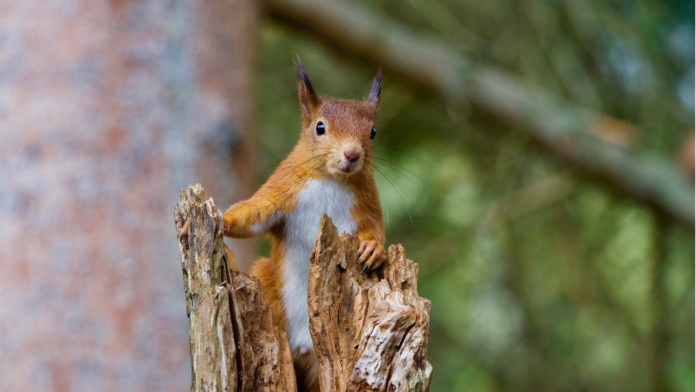When moving away from home for the first time, making it on your own can be tough. Even for young adults pushing 30, parental support, or the helping hand of an inheritance, can make all the difference. Turns out, it’s not just humans that benefit from this type of assistance.
Young red squirrels have to move out of ‘home’ by the autumn of their birth year. With winter approaching, their best chance of survival is finding a territory left vacant by the death of an adult. These territories come with the inheritance of hidden food caches, or middens. But for young squirrels on the hunt for their first home, not all inheritances are created equal.
Using data was collected through the Kluane Red Squirrel project, a group following North American Red Squirrels in the Yukon, researchers studied the size and impact of these food caches. Middens contain foods like white spruce cones that remain edible for up to four years.
“It’s a bit like a young couple moving in and finding a pile of money hidden in a chest of drawers in their house or something like that. It gives them an enormous leg up,” David Fisher, the study’s lead author and a former postdoctoral researcher with the University of Guelph, told CBC News.
The study found that middens previously owned by an adult male were most lucrative, containing on average 1,300 more cones than those kept by females. That’s enough food for 17 extra days – an important advantage during the long cold Yukon winters.
Inheriting from a male squirrel also has benefits for future offspring. The researchers found this inheritance increased lifetime pup production by 50%, plus pups were born earlier, giving them a greater chance of surviving the winter.
“We think males store more cones than females because they need to access food resources to fuel breeding behaviour during the winter months, when snow prevents foraging off of the food store,” explains University of Alberta biologist Stan Boutin, a co-author on the study.
By comparison, females have a greater need for food in spring, after their pups are born. At this point, foraging is easier so the food cache isn’t as critical.
Currently researchers don’t know what determines who will inherit a particular midden, but they have seen cases of females bequeathing her cache to a pup.
“We tend to think of humans as being the only organisms that pass on like a material culture,” said Fisher. “But this demonstrates that these kinds of physical resources can matter to organisms other than humans and make a huge difference to the lives of even tiny mammals living in the North.”









































